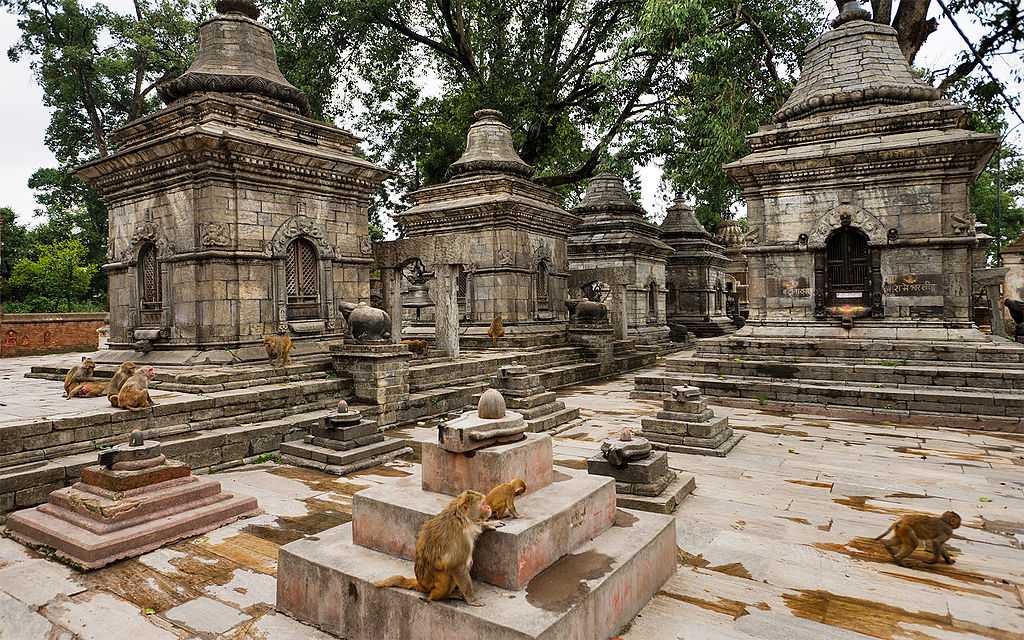Pashupatinath Temple, Nepal: A Sacred Journey
Pashupatinath Temple, located in Kathmandu, Nepal, is one of the most revered Hindu temples dedicated to Lord Shiva. As a UNESCO World Heritage Site, it draws thousands of devotees and tourists each year. The temple’s serene surroundings and rich cultural heritage make it a must-visit destination for anyone traveling to Nepal.

Pashupatinath Temple
A Glimpse into History
The history of Pashupatinath Temple dates back to ancient times. Legend has it that the temple was constructed in the 5th century by Lichhavi King Prachanda Dev. He built it after finding a Shiva lingam in the Bagmati River. Over the centuries, various rulers expanded and renovated the temple, adding to its grandeur and significance.
Stunning Architecture: Pashupatinath temple
As you approach the temple, you’ll be captivated by its stunning architecture. The main temple, built in the Nepalese pagoda style, features a gilded roof and four silver-covered sides. Exquisite wood carvings adorn the temple, and the sacred sanctum houses the revered Shiva lingam. Surrounding the main temple, numerous smaller shrines and statues enhance the spiritual atmosphere.
Religious Significance of Pashupatinath Temple
Pashupatinath holds immense religious importance for Hindus. It is one of the twelve Jyotirlingas, which are sacred abodes of Lord Shiva. According to Hindu beliefs, worshipping at Pashupatinath grants liberation from the cycle of birth and rebirth. This belief attracts thousands of pilgrims, especially during the Maha Shivaratri festival, when the temple becomes a hub of vibrant activities and spiritual energy.
A Spiritual Experience
Visiting Pashupatinath offers a profound spiritual experience. Upon entering the temple complex, you’ll hear sacred chants, smell the aroma of incense, and see saffron-clad sadhus (holy men) meditating by the Bagmati River. This river, flowing beside the temple, is considered holy. Many believe that ritual bathing in its waters cleanses one’s sins.
Cultural Significance
The temple is not only a religious site but also a cultural treasure. Various ceremonies, including cremation rituals, take place on the ghats (stone steps) along the Bagmati River. While these ceremonies might seem unusual to outsiders, they are an integral part of Hindu beliefs and practices, showcasing the cycle of life and death.
Getting There and Facilities
Reaching Pashupatinath Temple is easy. The temple is accessible from any part of Kathmandu, with regular public transportation and taxis available. Once inside the temple complex, I’ll find various facilities for visitors, including rest areas and information centers.
Tips for Visitors: Pashupatinath Temple
If you plan to visit Pashupatinath Temple, dress modestly and respect the religious customs. Photography is allowed in certain areas but restricted in the main temple premises. Hiring a local guide can enhance your experience, providing deeper insights into the temple’s history and significance.
Pashupatinath Temple is a place where history, culture, and spirituality converge. Its rich heritage and serene environment offer a unique and memorable experience. Whether we’re a devotee seeking spiritual solace or a traveler eager to explore Nepal’s cultural landmarks, Pashupatinath Temple stands as a beacon of peace and divinity, inviting all to partake in its timeless legacy.
For Further Information
Nepal Tour Package provides the best tour packages for the travel lovers of each type, whether it is Adventure Tour, Spiritual Tour, Beach Tour, Family Tour, Heritage Tour, Holiday Tour & Wildlife Tour.
For more information call our tour experts: +91 –7982194316
Get the best Holiday Offers
Email Us at :- info@nepaltpurpackages.com




